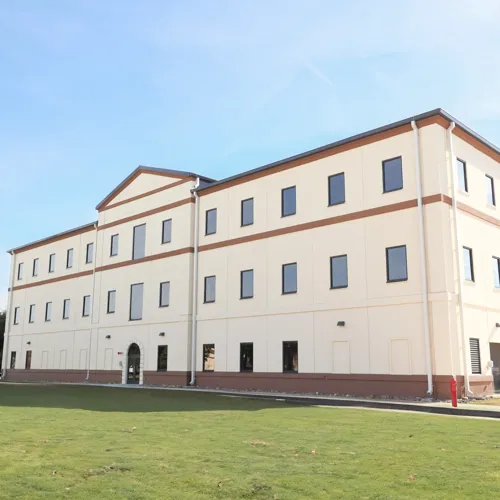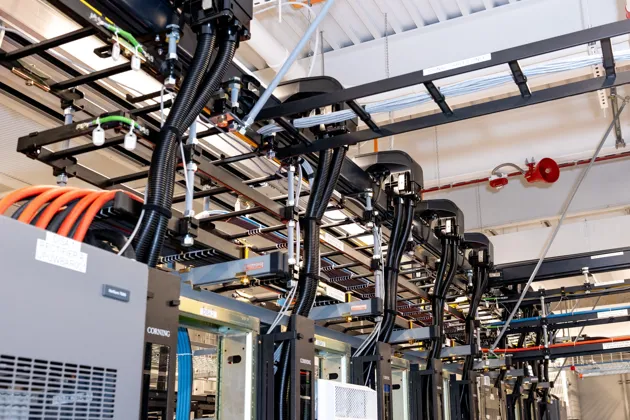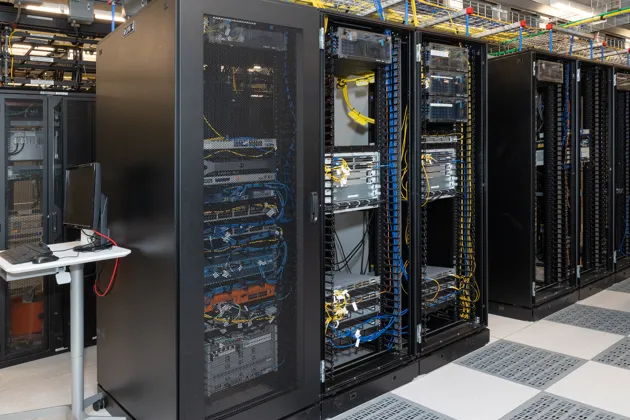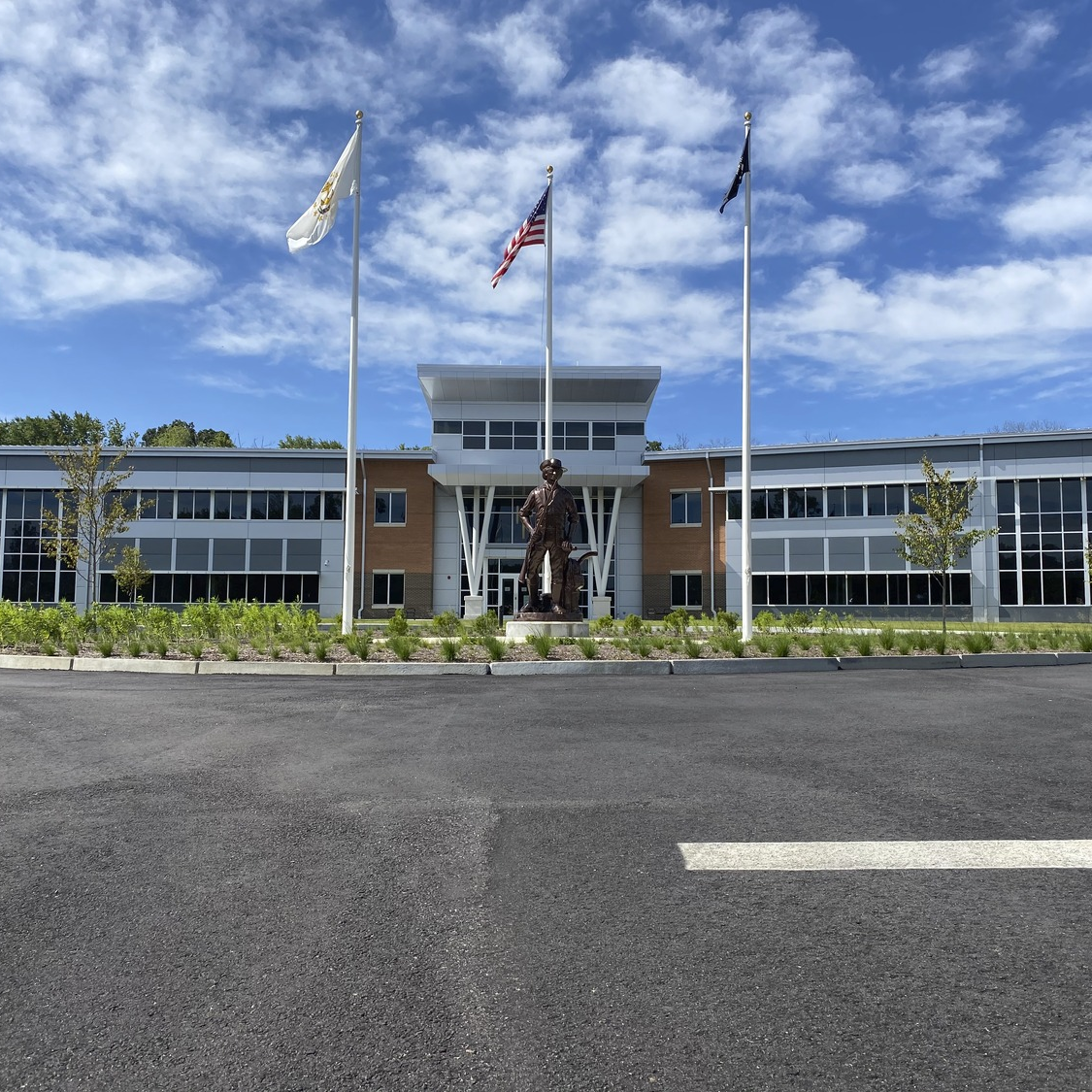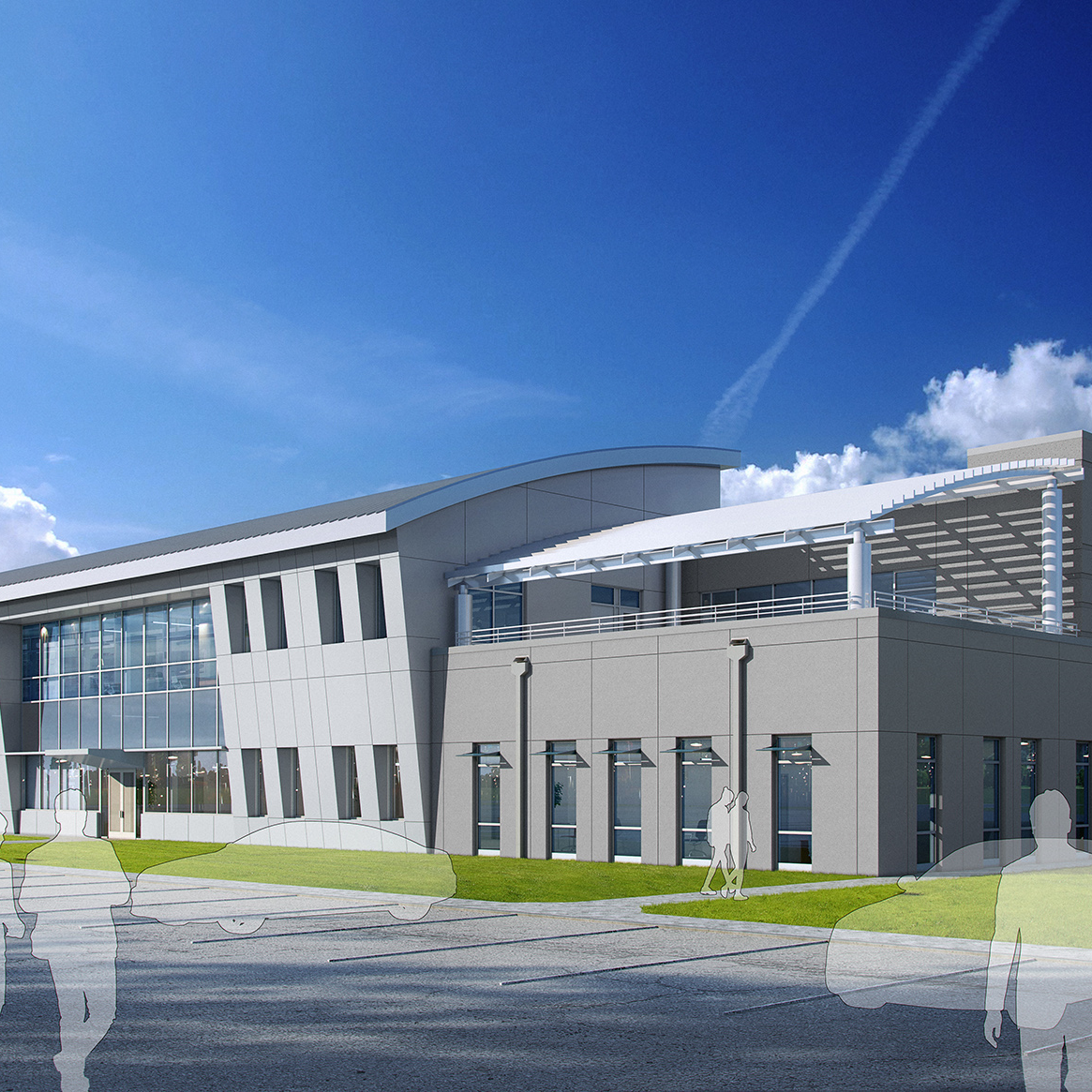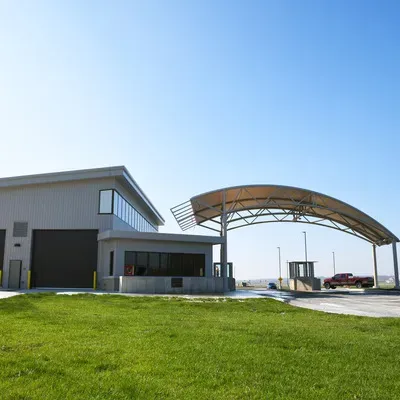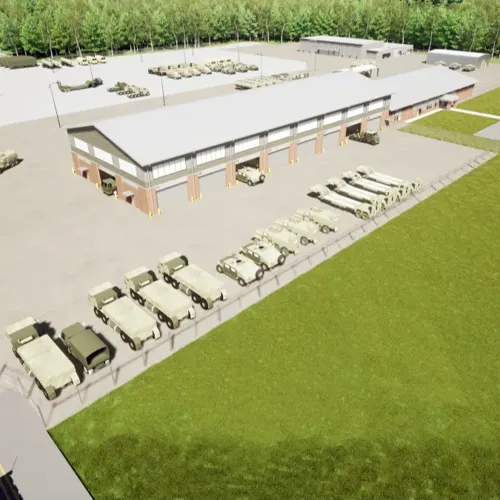Consolidated Communications Facility (2nd Communications Squadron HQ)
Within a design-build team, Pond led the design of a new 47,658-square-foot Consolidated Communications Facility, adhering to UFC and UFGS criteria. The site, situated within a registered historic district, featured existing structures and infrastructure, necessitating design approval from the Base Historic Preservation Office to assess the impact on the surroundings. Pond facilitated the post-award kickoff and design charrette to establish contract administration roles, validate DD 1391 requirements, and understand user group needs.
The three-story facility consolidates various functions of the Air Force’s 2nd Communications Squadron into a unified space, optimizing operational efficiency and harmonizing architecturally with the installation's traditional style. The facility houses administrative offices, conference rooms, classrooms, and storage spaces, including three Intelligence Community Directive 705-compliant secure areas. These secure zones, including the SIPRNET Café, classified computer server room, and COMSEC storage room, are equipped with state-of-the-art intrusion detection and access control systems. The design caters to the needs of the Headquarters Command Suite, providing office spaces for key personnel and facilitating efficient circulation through a well-planned corridor layout.
Site improvements featured a new asphalt parking lot, mill and overlay of an existing parking lot, utility yard, concrete dumpster pad, bike racks, and sidewalks. Reflecting the traditional style of the installation, the facility's exterior and interior design exude symmetry. The three-story concrete and steel frame structure houses critical operations for communication systems supporting over 7,000 users assigned to the 2nd Bomb Wing, Headquarters 8th Air Force/Air Force Strategic-Global Strike.
The coordination of disciplines was accomplished using BIM (Autodesk Revit) and AutoCAD. Pond developed construction documents using SpecsIntact software and maintained seamless integration with the construction team, providing RFI responses and shop drawing/as-built support and participating in regular progress meetings. The project successfully balanced architectural harmony, historical preservation, and cutting-edge communication infrastructure to meet the diverse needs of the installation and its users.
The three-story facility consolidates various functions of the Air Force’s 2nd Communications Squadron into a unified space, optimizing operational efficiency and harmonizing architecturally with the installation's traditional style. The facility houses administrative offices, conference rooms, classrooms, and storage spaces, including three Intelligence Community Directive 705-compliant secure areas. These secure zones, including the SIPRNET Café, classified computer server room, and COMSEC storage room, are equipped with state-of-the-art intrusion detection and access control systems. The design caters to the needs of the Headquarters Command Suite, providing office spaces for key personnel and facilitating efficient circulation through a well-planned corridor layout.
Site improvements featured a new asphalt parking lot, mill and overlay of an existing parking lot, utility yard, concrete dumpster pad, bike racks, and sidewalks. Reflecting the traditional style of the installation, the facility's exterior and interior design exude symmetry. The three-story concrete and steel frame structure houses critical operations for communication systems supporting over 7,000 users assigned to the 2nd Bomb Wing, Headquarters 8th Air Force/Air Force Strategic-Global Strike.
The coordination of disciplines was accomplished using BIM (Autodesk Revit) and AutoCAD. Pond developed construction documents using SpecsIntact software and maintained seamless integration with the construction team, providing RFI responses and shop drawing/as-built support and participating in regular progress meetings. The project successfully balanced architectural harmony, historical preservation, and cutting-edge communication infrastructure to meet the diverse needs of the installation and its users.
Project Photos
CLIENT
NAVFAC Southeast
LOCATION
Barksdale AFB, LA
Similar Projects
